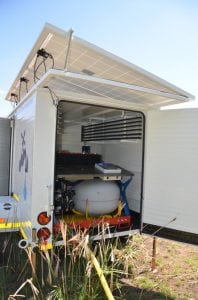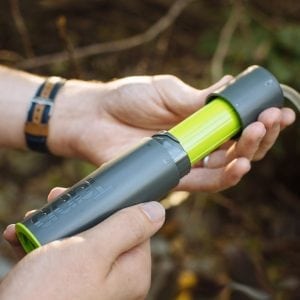
Agriculture
November 9, 2023
SHIPO Tube Well Drilling
Read SolutionImplemented by
Southern Highlands Participatory Organisation (SHIPO)

Updated on November 9, 2023
·Created on September 2, 2020
The Baptist Drilling Method is a hybrid between sludging and percussion drilling.
The Baptist Drilling Method is a method of borehole construction that utilizes a valve incorporated into the bit at the bottom of the drill stem to maintain pressure during the drilling process. The main action that is used for power is a rope and pulley system.
Target Countries
Argentina, Bolivia, Cameroon, Chile, Costa Rica, Ethiopia, Kenya, Malawi, Mali, Mexico, Mozambique, Netherlands, Nicaragua, Nigeria, Sri Lanka, Tanzania, Togo, United States, Zambia
Target SDGs
SDG 6: Clean Water and Sanitation
Market Suggested Retail Price
$150.00
Target Users (Target Impact Group)
Community
Distributors / Implementing Organizations
Water for All , Arrakis, and others
Competitive Landscape
Direct competitors include The Village Drill and SHIPO Tube Well Drilling.
Manufacturing/Building Method
The Baptist Drilling Method can be constructed in any arc-welding workshop and plans are open source and accessible online.
Intellectural Property Type
Open Source
User Provision Model
Users can obtain the product from any nearby welders or contractors in their home country
Distributions to Date Status
Unknown
Design Specifications
The Baptist Drilling Method utilizes a rope and pulley system to jettison a 1.25 inch drill bit into the ground again and again. Similar to sludging style drilling, this technique works to bore the hole with repeated contact into the ground.
Technical Support
Technical support can be found in open-source manual
Replacement Components
All components of the drilling rig will need to be replaced over time with wear and tear
Lifecycle
The lifecycle of this drilling rig depends on how well constructed and maintained the materials are
Manufacturer Specified Performance Parameters
The drill is able to drill to a depth of at least 30 m. However, some wells have been drilled to at least 100 m.
Vetted Performance Status
Harvard University
Safety
Safety precautions can be found in this open source manual
Complementary Technical Systems
None
Academic Research and References
Fitzgerald, C., 2007, Low Cost Manual Well Drilling – Applicability throughout the World. Paper, Geological Society of America Abstracts with Programs, 39(6), pp. 522
Stocker, J., 2007, The Water For All Baptist Drilling Method [www.waterforallinternational.org/Pages/videos.aspx], film.
Closen, P., 2008, Baptist Well Drilling: motorized, film.
Compliance with regulations
Unknown
Evaluation methods
Unknown
Other Information
None

Agriculture
November 9, 2023
Implemented by
Southern Highlands Participatory Organisation (SHIPO)

Agriculture
November 9, 2023
Implemented by
Aqua-cura

Agriculture
November 9, 2023
Implemented by
Aquagenx

Agriculture
November 9, 2023
Implemented by
Jung Uk Park, Myeong Hoon Lee, and Dae Youl Lee

Agriculture
November 9, 2023
Implemented by
Folia Water

Agriculture
November 10, 2023
Implemented by
3M

Agriculture
November 9, 2023
Implemented by
Tapp Global Design Inc

Agriculture
November 9, 2023
Implemented by
DHAN Foundation

Agriculture
November 9, 2023
Implemented by
Katadyn Group

Agriculture
November 9, 2023
Implemented by
Glanris
Have thoughts on how we can improve?
Give Us Feedback